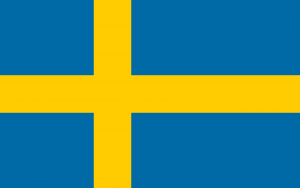Language/Swedish/Grammar/Nouns
Hi Swedish learners! 😊
In today's lesson, we will be discussing the basics of Swedish nouns. Nouns are an essential part of any language, and understanding them is key to mastering Swedish. We will cover the different types of nouns, how to form plurals, and how to use nouns in sentences.
Types of Nouns
In Swedish, there are two main types of nouns: common nouns and proper nouns. Common nouns refer to general things, such as "cat" or "house". Proper nouns refer to specific people, places, or things, such as "John" or "Stockholm".
Gender
In Swedish, all nouns have a gender. This means that each noun is either masculine, feminine, or neuter. For example, the word for "cat" (katt) is a neuter noun, while the word for "dog" (hund) is a masculine noun.
It is important to note that the gender of a noun does not always correspond to its actual gender. For example, the word for "girl" (flicka) is a neuter noun, even though it refers to a female person.
Plurals
In Swedish, nouns can be singular or plural. To form the plural of a noun, you usually add an -er ending. For example, the word for "cat" (katt) becomes katter in the plural.
However, there are some exceptions to this rule. For example, the word for "dog" (hund) becomes hundar in the plural, not hunder.
Using Nouns in Sentences
When using nouns in sentences, it is important to remember to use the correct gender and number. For example, if you are talking about one cat, you would say "en katt" (a neuter singular noun). If you are talking about two cats, you would say "två katter" (a neuter plural noun).
It is also important to remember to use the correct article. In Swedish, the definite article is "en" for masculine nouns, "ett" for neuter nouns, and "en" for both masculine and neuter nouns in the plural. For example, if you are talking about one dog, you would say "en hund" (a masculine singular noun). If you are talking about two dogs, you would say "två hundar" (a masculine plural noun).
If you have any questions, please ask them in the comments section below.
Feel free to edit this wiki page if you think it can be improved. 😎

